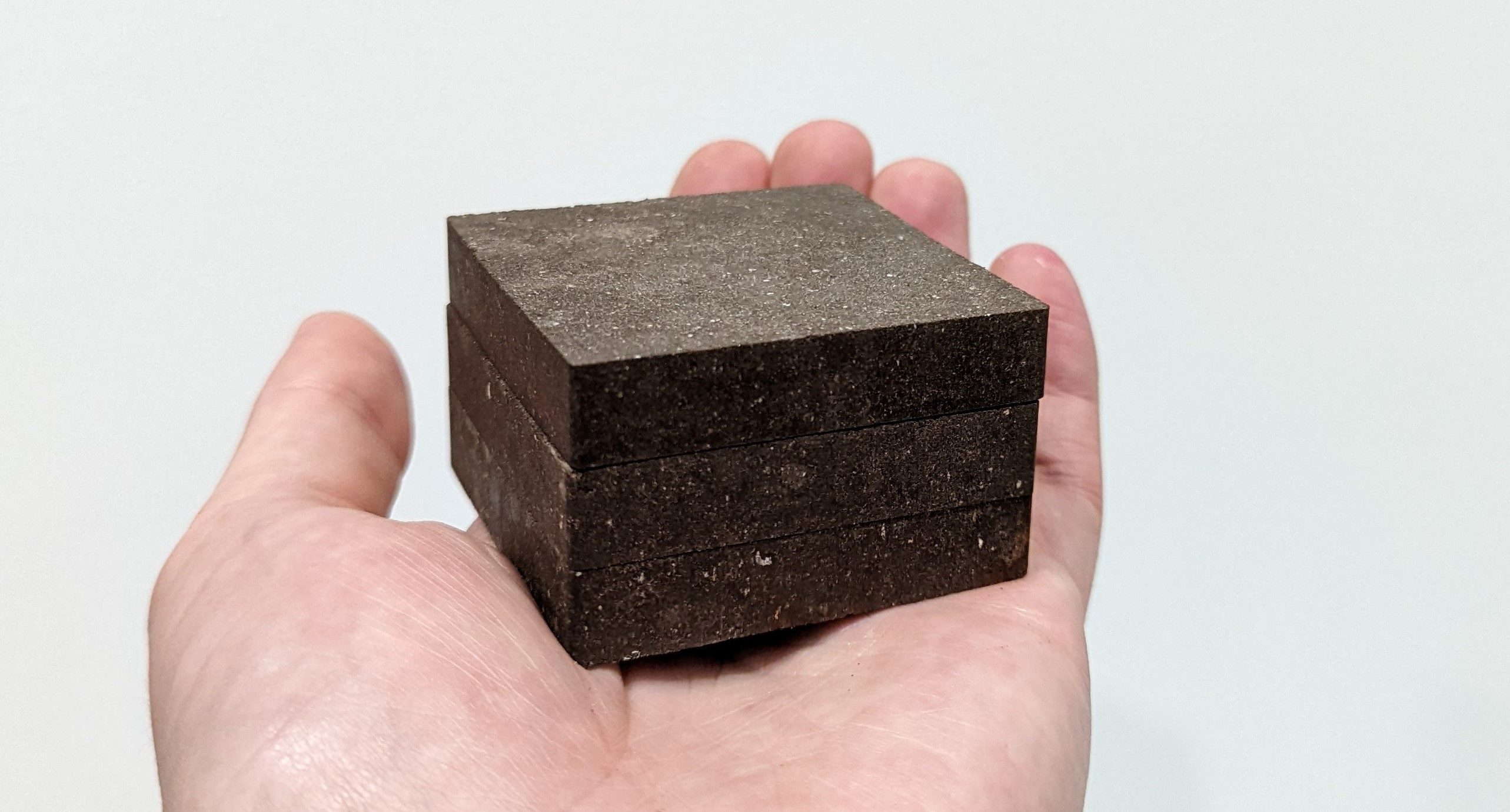Scientists in the UK have developed a new type of concrete that might one day be used to build settlements elsewhere else in the Solar System. By combining potato starch with material simulating the dust of Mars or the Moon, they created something much stronger than regular concrete.
This so-called “StarCrete” made of Martian dust has a compressive strength of 72 megapascals (MPa), which is over twice that of regular concrete. When the material was made with the fake Moon dust it became even stronger, reaching 91 Mpa.
The team from the University of Manchester has been working on how to make concrete with local resources on the Moon and Mars, requiring very little extra material brought from Earth. Their previous work showed that concrete could be made by using the blood or urine of astronauts. For the sake of future explorers, they have now moved on to potatoes.
“Since we will be producing starch as food for astronauts, it made sense to look at that as a binding agent rather than human blood,” project lead Dr Aled Roberts, Research Fellow at the Future Biomanufacturing Research Hub, said in a statement.
“Also, current building technologies still need many years of development and require considerable energy and additional heavy processing equipment which all adds cost and complexity to a mission. StarCrete doesn’t need any of this and so it simplifies the mission and makes it cheaper and more feasible.”
That’s not the only consideration, though. “And anyway, astronauts probably don’t want to be living in houses made from scabs and urine!” Roberts added.

A sample of the incredibly strong StarCrete. Image Credit: Aled Roberts
There is something else that astronauts produce that might actually make it even stronger: magnesium chloride, a salt found in tears. But don’t worry, if it’s starting to sound like future Martian cities are going to be built on the literal blood, sweat, and tears of space travelers, magnesium chloride is normally found on the surface of Mars.
The team estimates that 25 kilograms of dehydrated potato starch is needed to make 213 bricks. If you were to build the average three-bedroom house you’d need about 35 times that amount. Roberts and his team have created a start-up called DeakinBio to not just improve StartCrete for space but also for potential use on Earth as it could be a greener alternative to concrete.
The production of this ubiquitous material is responsible for 8 percent of carbon dioxide emissions. This is due to the high temperatures needed to produce it. StarCrete can be made in a regular oven or even a microwave, making it more energy efficient.
The study is published in the journal Open Engineering.
Source Link: Martian Cities Could One Day Be Built From Potatoes And Dust